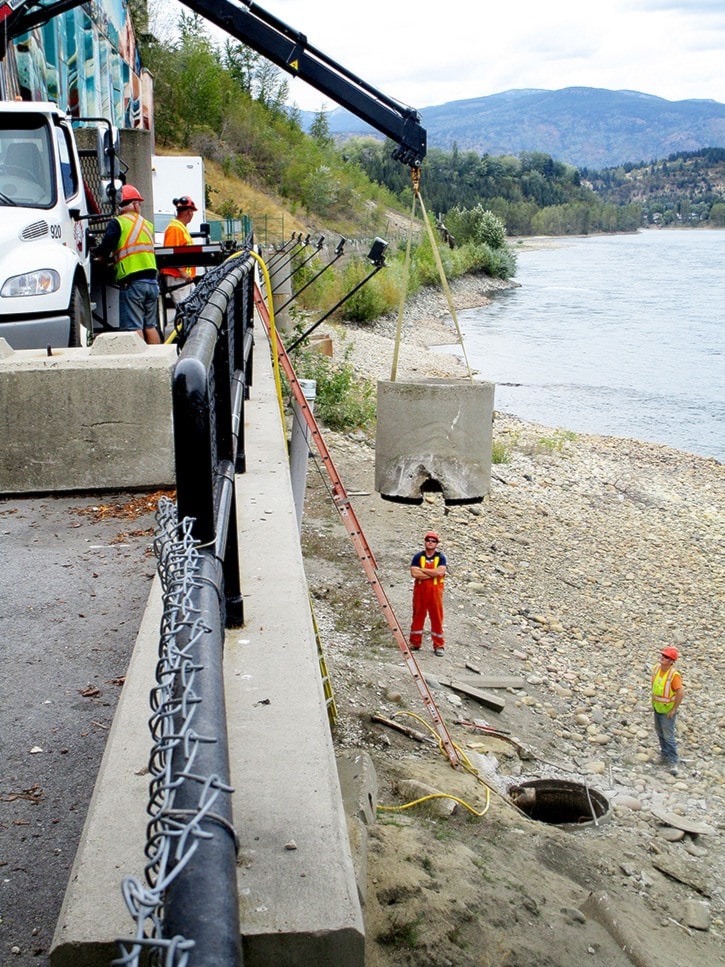No one likes being hit with a unexpected bill, especially one for $152,000.
That’s what happened to the City of Trail last summer when actual flow exceeded a pre-determined amount of sewer being sent to the treatment plant.
On behalf of Rossland, the regional service sent Trail the $152,000 invoice to reapportion costs retroactive to 2014 and 2015, based on flow meter readings, not the previously arbitrated 63 per cent. (Warfield also had to settle up with the Alpine City and pay back almost $17,000).
So with a new year and the recent passing of the 2017 sewer budget, taxpayers may be wondering if the city will feel the same sting in a few months time. After all, sewer costs are respective to volume and the flow meter readings neared 71 per cent for Trail in January — well above 64 per cent, the number council is budgeting for.
In a nutshell, Trail Coun. Robert Cacchioni says, “No.”
“There will not be another big payback to Rossland,” Cacchioni, the city’s sewer committee appointee, told the Trail Times.
Flows for 2016, which determine 2017 costs, were set at almost 65 per cent for Trail, 23 per cent for Rossland, and about 12 per cent for Warfield.
“We had estimated flows at 62.56 per cent, but the flows were way higher, and we had to make that up” he explained, referring to the retroactive bill in July 2016.
“From now on, it’s always based on flow. So that 71 (volume percentage in January) may not make a difference because in February it could go down to 62 per cent.”
He said it’s interesting to note that Rossland’s flow in January was only 17 per cent.
“That is relatively low yet their population is almost double in January,” Cacchioni speculated. “I think it’s because of the lack of I/I, the ground is frozen so the water doesn’t get in (to the sewer system).”
I/I refers to “inflow and infiltration,” or water that enters the sewer line and increases the load on the system. It’s an important factor because no matter the source, water or I/I, comes with a cost because it must be treated the same as liquid waste.
Before Trail paid its bill, the city investigated whether I/I was increasing municipal sewer volumes.
Part of that review led to the city installing a flow meter near Teck Trail Operations — right below the Trail Memorial Centre — until that point, Cacchioni says the city never included Teck’s actual flow as part of the overall volume.
Based on current values, the plant contributes between three and five per cent of the total regional flow, confirmed Chief Administrative Officer David Perehudoff.
“Teck pays the metered flow rate the same as any other commercial customer in accordance with the Utilities Rates Bylaw,” he explained. “We do not have enough data to determine what the percentage charge will be as compared to flow, but the cost recovery should compensate for the Teck flow and the regional charges.”
Perehudoff emphasized the city is in the early stages of monitoring Teck flow readings, and has just started to generate invoicing.
“The city will be recovering directly the regional costs associated with the Teck flow so there won’t be any additional costs to the Trail ratepayer as a result of the Teck flow,” he added. “The utility is run on a ‘break even’ basis and based on how the bylaw is structured the fees paid should closely approximate the direct annual costs.”
Between the three regional partners,Cacchioni says the 2017 budget has Trail contributing just over $1 million, Rossland approximately $355,000 and Warfield $185,000. He added, “Area B, about $16,000, which is approximately half of previous years (contract).”
Data is collected from three flow meters (excluding the city’s meter below the arena); one above Warfield, one near the Gulch bocce pits and one at the Waneta treatment plant.
